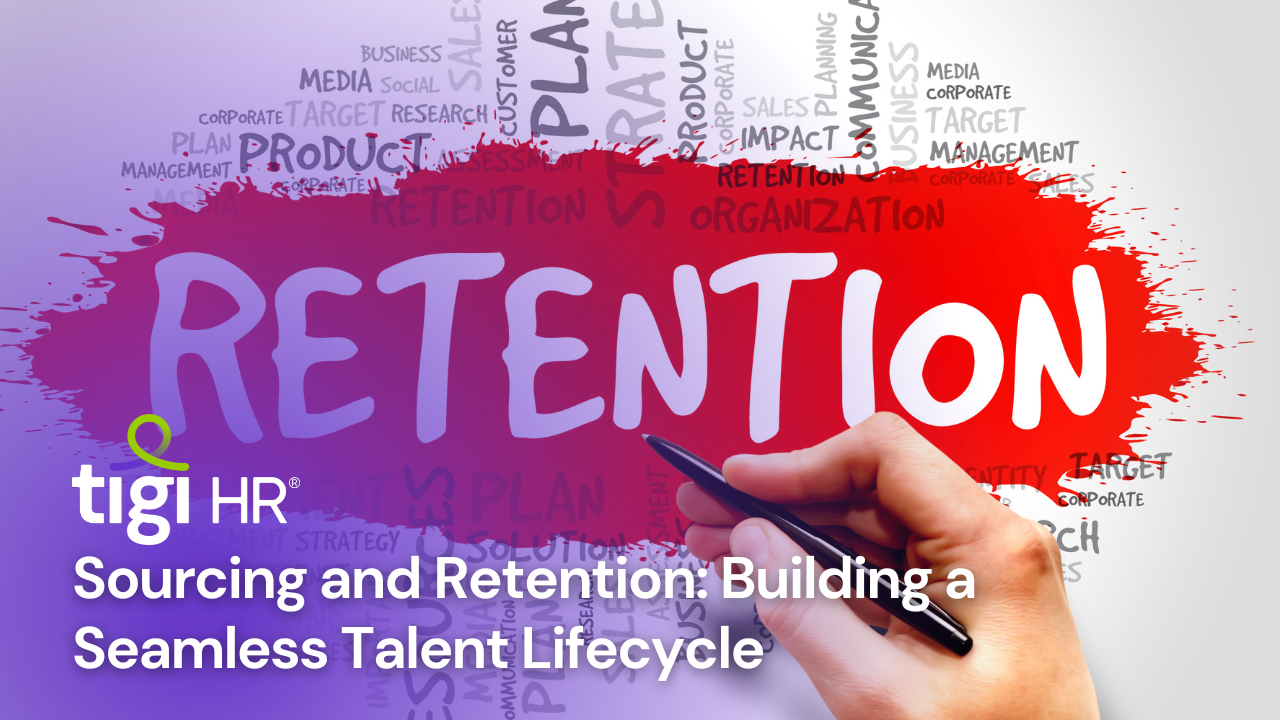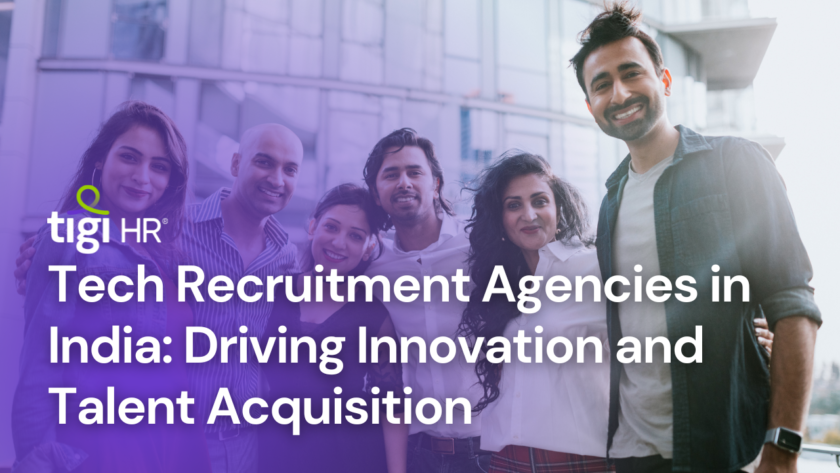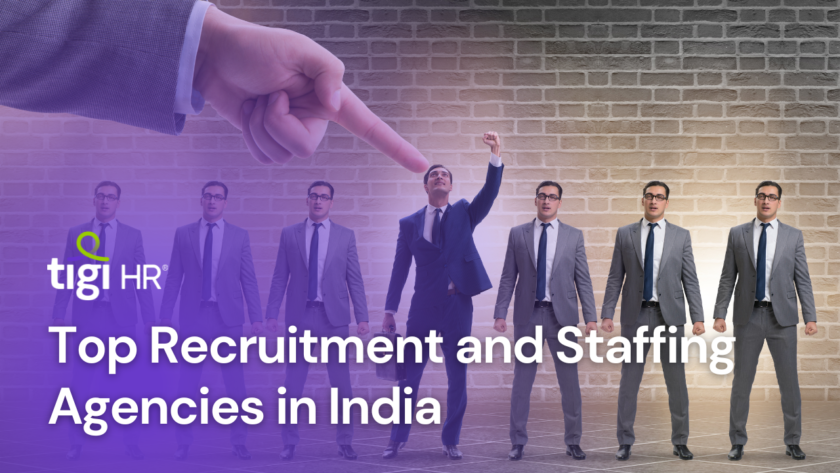Recruitment Strategies: Navigating the Talent Landscape
In the dynamic realm of talent acquisition, crafting effective recruitment strategies is paramount for organizations striving to secure top-tier professionals. Leveraging the right channels and methods can make all the difference in attracting candidates who not only possess the required skills but also align with the company’s culture and values.
Recent studies underscore the significance of a well-defined recruitment approach. According to a survey by [Industry Insights Organization], organizations that utilize a mix of traditional and digital recruitment channels experience a 20% increase in candidate quality compared to those relying solely on conventional methods. This emphasizes the need for a diversified approach that incorporates online platforms, professional networks, and industry-specific events.
Furthermore, the candidate experience plays a pivotal role in the success of recruitment endeavors. A report by [Recruitment Trends Institute] reveals that 75% of applicants consider the application and interview process as indicative of how a company values its employees. Investing in a streamlined and transparent application process not only attracts potential talent but also contributes to a positive employer brand.
To stay ahead in the competitive talent landscape, companies are increasingly turning to data-driven recruitment strategies. Analyzing metrics such as time-to-fill, cost-per-hire, and candidate satisfaction provides valuable insights for refining and optimizing the recruitment process. In fact, organizations leveraging data-driven approaches report a 15% improvement in overall recruitment efficiency, according to a study conducted by HR Analytics Insights.
In summary, effective recruitment strategies go beyond traditional methods, embracing a blend of digital channels and prioritizing a positive candidate experience. By incorporating data-driven insights, organizations can elevate their talent acquisition game, ensuring they not only attract top-notch candidates but also set the stage for a successful and enduring employer-employee relationship.
Candidate Experience: Elevating Engagement from First Contact to Onboarding
In the competitive landscape of talent acquisition, prioritizing a seamless and positive candidate experience is a strategic imperative for organizations looking to secure top talent. The journey from the initial contact to onboarding significantly influences a candidate’s perception of the company, impacting not only recruitment success but also long-term employee engagement.
Recent research highlights the tangible impact of candidate experience on organizational outcomes. According to a survey conducted by Candidate Insights Institute, companies that invest in enhancing the candidate experience witness a 30% increase in offer acceptance rates. This underscores the direct correlation between a positive candidate journey and a candidate’s decision to commit to a prospective employer.
One key aspect of optimizing candidate experience is streamlining the application and interview processes. A study by Recruitment Excellence Analytics reveals that organizations with simplified and transparent application procedures experience a 25% reduction in candidate drop-off rates. This emphasizes the importance of minimizing friction in the early stages of engagement to retain the interest of high-caliber candidates.
Moreover, technology plays a pivotal role in shaping a candidate’s experience. The implementation of applicant tracking systems (ATS) and AI-driven tools not only expedites the recruitment process but also provides candidates with a more personalized and responsive interaction. Research by TechRecruit Innovations suggests that companies incorporating advanced technology into their recruitment workflows report a 20% increase in candidate satisfaction scores.
Employer Branding: Crafting a Compelling Identity for Talent Attraction
In the contemporary job market, employer branding stands out as a pivotal element in the quest to attract and retain top-tier talent. A company’s reputation and image directly impact its ability to allure skilled professionals who align with its values and culture. Crafting a compelling employer brand is not merely a marketing endeavor but a strategic investment with tangible effects on recruitment success.
Research from BrandRecruit Analytics underscores the significance of a strong employer brand. Companies with a positive employer brand are 50% more likely to attract highly qualified candidates. This emphasizes that an appealing employer brand is a powerful magnet for top talent, influencing their decision-making throughout the application and selection process.
Social media platforms play a crucial role in shaping and broadcasting an employer brand. According to a study by [SocialRecruit Trends], 70% of job seekers turn to social media to research company culture and values before applying. This highlights the need for organizations to curate a positive and authentic online presence, showcasing their workplace culture and employee experiences.
Moreover, employer branding extends beyond the recruitment phase, impacting employee retention. A survey conducted by [TalentRetention Insights] reveals that companies with a well-defined employer brand experience a 20% lower employee turnover rate. This underlines the long-term benefits of investing in a positive employer brand, not only in attracting new talent but also in fostering a committed and satisfied workforce.
In summary, employer branding is a strategic imperative for organizations aiming to stand out in the competitive talent landscape. Leveraging social media, cultivating a positive online presence, and emphasizing employee testimonials contribute to a compelling employer brand that resonates with top talent, ultimately fostering a workforce aligned with the company’s values and mission.
Onboarding Practices: Building Bridges for Long-Term Engagement
The onboarding process serves as a critical bridge between recruitment and employee retention, shaping the initial experiences that new hires have within a company. A well-designed onboarding strategy goes beyond paperwork, creating a seamless transition that fosters a sense of belonging and sets the stage for long-term engagement.
Statistics from Onboarding Excellence Institute emphasize the impact of effective onboarding on employee retention. Companies with a structured onboarding process experience a 50% higher retention rate among new hires. This statistic underscores the pivotal role of onboarding in creating a positive first impression and facilitating a smooth assimilation into the company culture.
Personalization is a key element in modern onboarding practices. According to a survey by EmployeeEngage Trends, 80% of employees believe that personalized onboarding contributes significantly to their job satisfaction. Tailoring the onboarding experience to the individual needs and goals of new hires enhances their sense of value and connection to the organization.
Technology integration also plays a crucial role in optimizing the onboarding journey. Research by [TechOnboard Innovations] indicates that companies leveraging digital onboarding tools report a 30% reduction in the time it takes for new employees to become fully productive. Streamlining administrative processes through technology allows new hires to focus on assimilating into their roles and building relationships within the team.
Training and Development: Nurturing Growth and Expertise
In the ever-evolving landscape of the professional world, investing in training and development is a cornerstone for organizations committed to fostering employee growth and expertise. Beyond recruitment and onboarding, continuous learning opportunities contribute significantly to employee satisfaction, skill enhancement, and long-term retention.
Statistics from TrainingTrends Report highlight the positive correlation between training programs and employee retention. Companies that prioritize employee development experience a 25% lower turnover rate compared to those that don’t invest in ongoing training. This underscores the pivotal role of learning initiatives in creating a work environment where employees feel valued and supported in their career progression.
Moreover, aligning training programs with strategic business goals enhances organizational performance. A study by [CorporateSkill Insights] reveals that companies with a well-defined training strategy aligned with business objectives achieve a 20% increase in overall productivity. This emphasizes the direct impact of targeted training on the bottom line, making it an integral component of a holistic talent lifecycle.
The emergence of digital learning platforms has revolutionized training methodologies. According to TechLearn Innovations, organizations incorporating e-learning technologies report a 30% reduction in training costs and a 45% increase in employee engagement with training materials. Embracing digital tools not only makes training more accessible but also allows employees to learn at their own pace, catering to diverse learning styles within the workforce.
In summary, training and development initiatives go beyond skill enhancement; they are strategic investments in the growth and expertise of the workforce. By aligning training programs with organizational goals and leveraging digital learning platforms, companies can create an environment that not only attracts top talent but also empowers employees to continually contribute to the success of the organization.
Performance Management: Maximizing Productivity and Employee Potential
Effective performance management is a cornerstone of organizational success, providing a structured framework to evaluate, enhance, and align employee contributions with strategic objectives. Beyond annual reviews, a dynamic performance management system contributes to ongoing employee development, fosters a culture of continuous improvement, and plays a pivotal role in talent retention.
Statistics from PerformanceInsights Survey underscore the impact of regular performance feedback on employee engagement. Organizations that provide continuous feedback experience a 15% higher employee engagement rate compared to those relying solely on annual reviews. This highlights the importance of real-time communication in keeping employees motivated and aligned with organizational goals.
Setting clear and measurable goals is a key aspect of performance management. According to a study by GoalSetting Dynamics, employees who have well-defined and achievable goals are 30% more likely to be engaged in their work. Establishing a transparent goal-setting process not only enhances employee motivation but also contributes to a culture of accountability and high performance.
Technology integration in performance management is on the rise, with data-driven insights playing a crucial role. Research by [HRMetrics Innovate] indicates that organizations leveraging data analytics in performance management experience a 20% increase in overall employee productivity. Analyzing performance metrics allows for informed decision-making, identifies areas for improvement, and provides valuable insights for talent development strategies.
Employee Engagement: Cultivating a Culture of Collaboration and Fulfillment
Employee engagement is the heartbeat of a thriving workplace, influencing productivity, job satisfaction, and ultimately, talent retention. A company’s success is intricately linked to the level of commitment and enthusiasm its employees bring to their roles. Cultivating a culture of engagement involves fostering open communication, recognizing contributions, and providing avenues for professional and personal growth.
Statistics from EngagementIndex Research reveal a compelling connection between employee engagement and organizational performance. Companies with highly engaged employees experience a 21% increase in profitability. This underscores the financial impact of a motivated and committed workforce on the overall success of a business.
Recognition programs play a crucial role in enhancing employee engagement. According to a study by RecognitionTrends Institute, 70% of employees agree that recognition programs positively impact their engagement and retention. Acknowledging and appreciating employees for their contributions not only boosts morale but also strengthens the emotional connection between employees and the organization.
Furthermore, fostering a sense of purpose is a powerful driver of engagement. Research by PurposefulWork Surveys indicates that employees who perceive their work as meaningful are 50% more engaged. Aligning individual roles with the broader mission and values of the company creates a sense of connection and fulfillment, contributing to a positive workplace culture.
Retention Strategies: Navigating the Waters of Employee Longevity
Retention strategies stand as the linchpin in preserving a skilled and motivated workforce, safeguarding against the costs and disruptions associated with high turnover rates. In today’s competitive job market, where attracting top talent is only half the battle, organizations must deploy strategic initiatives to retain their valuable employees.
Statistics from the Retention Trends Report underscore the financial implications of employee turnover. The cost of replacing an employee can range from 50% to 200% of their annual salary, depending on the role and level within the organization. This significant financial investment makes the development and implementation of effective retention strategies not just a cultural imperative but a sound business decision.
Flexible work arrangements emerge as a powerful retention tool in the modern workforce. Research by WorkFlex Insights indicates that companies offering flexible work options experience a 20% reduction in employee turnover. This flexibility not only caters to the evolving work preferences of employees but also contributes to a better work-life balance, a factor increasingly valued by today’s workforce.
Career development opportunities also play a pivotal role in employee retention. A study by CareerGrowth Dynamics reveals that 70% of employees consider opportunities for professional growth as a key factor in their decision to stay with an organization. Implementing mentorship programs, skill development initiatives, and clear career paths communicates a commitment to the long-term success and satisfaction of employees.
In summary, retention strategies are integral to the sustainability and success of any organization. By understanding the financial implications of turnover, embracing flexible work arrangements, and prioritizing career development, companies can foster an environment where employees feel valued, supported, and motivated to stay, ultimately contributing to a resilient and thriving workforce.
Workplace Culture: Nurturing a Tapestry of Inclusivity and Well-being
The fabric of workplace culture weaves together the values, behaviors, and interactions that define an organization. Fostering a positive and inclusive culture goes beyond superficial perks, playing a pivotal role in attracting and retaining talent. A workplace culture that prioritizes inclusivity and well-being not only enhances employee satisfaction but also contributes to a resilient and collaborative workforce.
Statistics from CultureImpact Surveys underline the impact of workplace culture on talent attraction and retention. Companies with a strong and positive culture are 65% more likely to retain their employees. This emphasizes the enduring influence of a supportive and inclusive environment in fostering a sense of belonging and commitment among employees.
Inclusivity is a key element of a vibrant workplace culture. According to a study by DiversityInsights Institute, organizations with diverse and inclusive cultures are 30% more likely to be high-performing. Actively promoting diversity not only enriches perspectives within the workforce but also creates an environment where employees feel valued for their unique contributions.
Employee well-being is an integral aspect of a positive workplace culture. Research by [WellnessAtWork Analytics] suggests that companies with well-being programs experience a 20% increase in employee satisfaction. Prioritizing initiatives that support mental and physical health, such as flexible work arrangements, wellness programs, and mental health resources, contributes to a culture that cares for its employees beyond professional considerations.
Succession Planning: Nurturing Tomorrow’s Leaders Today
Succession planning is a strategic imperative for organizations aspiring to navigate the complexities of leadership transitions seamlessly. Beyond mitigating risks associated with key personnel changes, a robust succession plan serves as a proactive approach to identifying, developing, and retaining high-potential employees, ensuring a steady pipeline of capable leaders for the future.
Insights from the SuccessionInsights Report emphasize the impact of effective succession planning on organizational resilience. Companies with a well-established succession plan are 2.5 times more likely to outperform their counterparts in terms of revenue growth. This statistic underscores the direct correlation between forward-thinking talent development and overall business success.
Identifying and developing internal talent is a key component of succession planning. According to a study by LeadershipDevelopment Trends, organizations that invest in leadership development programs report a 40% increase in the readiness of internal candidates for leadership roles. This highlights the role of targeted development initiatives in nurturing a pool of leaders from within the existing talent pool.
Furthermore, succession planning is not solely about filling leadership gaps but also about aligning development with strategic goals. Research by StrategicSuccession Dynamics indicates that companies integrating succession planning with strategic objectives experience a 30% higher success rate in achieving organizational goals. This emphasizes the need for a holistic approach that considers both immediate leadership needs and long-term strategic objectives.
In summary, succession planning is a dynamic and forward-looking aspect of talent management. By investing in leadership development, aligning succession plans with strategic goals, and recognizing the impact on overall business performance, organizations can ensure a smooth transition of leadership, cultivate a pool of capable leaders, and fortify their position in a rapidly changing business landscape.
Flexible Work Arrangements: Adapting to the Modern Work Landscape
In the evolving landscape of work preferences and expectations, embracing flexible work arrangements has become a pivotal strategy for attracting and retaining top talent. Beyond being a response to global shifts, flexible work options contribute to increased employee satisfaction, improved work-life balance, and enhanced organizational resilience.
Insights from FlexibleWork Surveys highlight the impact of flexibility on employee loyalty. Companies offering flexible work arrangements experience a 20% lower turnover rate compared to those with rigid work structures. This emphasizes the role of flexibility as a key factor in creating a work environment that accommodates the diverse needs and lifestyles of employees.
Remote work, in particular, has gained prominence in recent years. A study by RemoteWork Insights indicates that organizations embracing remote work report a 30% increase in employee productivity. The flexibility to work from anywhere not only attracts top talent but also contributes to a culture of trust and autonomy, factors increasingly valued by the modern workforce.
Moreover, flexible work arrangements have a direct impact on talent attraction. According to a survey by WorkPreference Trends, 80% of job seekers consider flexible work options as a crucial factor in their decision-making process. Offering flexibility, whether in terms of remote work, flexible hours, or compressed workweeks, positions organizations as attractive employers in a competitive job market.
Benefits and Perks: Designing a Competitive Package for Talent Attraction and Retention
In the competitive landscape of talent acquisition and retention, the design of comprehensive benefits and perks packages has emerged as a critical strategy for organizations aiming to attract and retain top-tier professionals. Beyond the traditional salary component, an appealing benefits package contributes to employee satisfaction, well-being, and long-term commitment.
Statistics from the EmployeeBenefits Index underscore the impact of benefits on overall job satisfaction. Employees who are satisfied with their benefits are 40% more likely to remain with their current employer. This highlights the role of a well-crafted benefits package in fostering employee loyalty and reducing turnover rates.
Health and wellness benefits are particularly influential in talent management. According to a survey by WellnessBenefits Trends, 70% of employees consider health and wellness programs as a significant factor in their decision to join or stay with an organization. Offering initiatives such as gym memberships, mental health resources, and wellness incentives not only contribute to a healthier workforce but also enhance the organization’s appeal.
Moreover, the importance of non-traditional perks is on the rise. Research from [PerksPreference Analytics] indicates that 60% of employees value non-traditional perks, such as flexible scheduling, remote work options, and professional development opportunities, as much as, if not more than, traditional benefits. This shift underscores the changing preferences of the workforce and the need for organizations to adapt their offerings accordingly.
In summary, benefits and perks packages play a pivotal role in talent attraction and retention. By aligning with the preferences of the workforce, emphasizing health and wellness, and recognizing the value of non-traditional perks, organizations can create a competitive edge in the talent landscape, ultimately fostering a satisfied and committed workforce.
Feedback Mechanisms: Cultivating Continuous Improvement in the Talent Lifecycle
Establishing effective feedback mechanisms is a cornerstone of nurturing a dynamic and responsive talent lifecycle within an organization. Beyond the traditional annual performance reviews, regular feedback contributes to employee growth, satisfaction, and overall organizational success by fostering a culture of continuous improvement.
Insights from the [FeedbackImpact Study] highlight the influence of feedback on employee performance. Organizations that prioritize regular feedback experience a 15% improvement in individual employee performance. This emphasizes the role of timely and constructive feedback in guiding employees toward their goals and maximizing their contributions to the organization.
The importance of feedback extends beyond individual performance to shape a collaborative and innovative workplace culture. According to a survey by CollaborationFeedback Trends, 80% of employees believe that feedback is crucial for fostering innovation within teams. Creating an environment where feedback is encouraged and valued not only enhances teamwork but also contributes to the generation of fresh ideas and solutions.
Moreover, feedback mechanisms play a pivotal role in employee engagement and satisfaction. Research from EmployeeFeedback Dynamics indicates that organizations with robust feedback processes experience a 25% higher employee satisfaction rate. This underscores the impact of transparent communication and the acknowledgment of employee contributions on overall job satisfaction.
In conclusion, feedback mechanisms are integral to the continuous improvement of the talent lifecycle. By recognizing the link between regular feedback and improved performance, fostering a culture of collaboration through feedback, and prioritizing employee satisfaction, organizations can create an environment that not only attracts top talent but also supports their ongoing development and success within the organization.
Conclusion
In the intricate dance of talent management, each subtopic we’ve explored converges to form a holistic approach—like pieces of a puzzle completing the picture of a seamless talent lifecycle. From recruitment strategies that cast a wide net to flexible work arrangements that adapt to the modern workforce, organizations are navigating the ever-evolving landscape of talent acquisition and retention.
The journey begins with the strategic deployment of recruitment strategies, recognizing that the right talent is the foundation of organizational success. A positive candidate experience, highlighted by transparent processes and engaging interactions, sets the stage for a lasting employer-employee relationship. Building upon this foundation, the employer brand emerges as a beacon, attracting individuals who resonate with the company’s values and culture.
Onboarding practices, often overlooked, emerge as a pivotal bridge, ensuring that the promise made during recruitment translates into a fulfilling employee experience. Training and development initiatives then take center stage, nurturing growth and expertise, with statistics underlining the financial benefits of investing in ongoing learning opportunities.
Performance management becomes a compass, guiding employees toward their goals and contributing to a culture of continuous improvement. Employee engagement, the heartbeat of a thriving workplace, is fostered through recognition, purpose, and open communication. Retention strategies, benefits, and perks solidify the commitment between the organization and its employees, acknowledging their value beyond the professional realm.
Succession planning emerges as a forward-thinking strategy, ensuring that leadership transitions are not stumbling blocks but opportunities for growth. Flexible work arrangements adapt to the diverse preferences of the modern workforce, creating an environment where work is not a place but an activity. Finally, feedback mechanisms complete the cycle, creating a culture of continuous improvement, innovation, and satisfaction.
In this tapestry of talent management, organizations that weave these subtopics together create not just workplaces but dynamic ecosystems where talent thrives, evolves, and contributes to the sustained success of the entire organization.
Improving Employee Retention Through Career Development
Unlocking organizational potential, career development initiatives are strategic cornerstones fostering skill enrichment, continuous learning, and employee commitment. This dynamic process not only equips teams with essential skills but also acts as a retention powerhouse, reducing turnover costs. Embrace career mapping strategies to navigate professional journeys strategically. In this symbiotic dance, loyalty becomes intrinsic, shaping workplaces into hubs of innovation and sustained success.
Find trusted recruitment agencies : Click here





